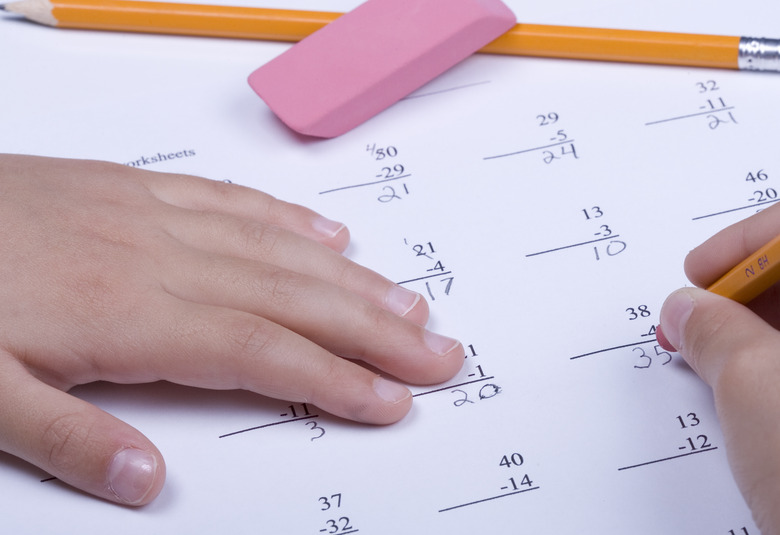Subtraction is a mathematical technique by which an amount is taken away, or subtracted, from another amount. For example, in the subtraction sentence 15 – 8 = 7, 8 is taken away from 15, leaving 7. A subtraction sentence has four main parts: the minuend, the subtrahend, an equals sign, and the difference. Understanding each of these parts will help students grasp basic subtraction principles, and form strategies for how to approach subtraction problems.
The Minuend
The minuend is the part of a subtraction sentence that indicates the starting amount. This is the amount from which some other amount will be taken away. In the example 15 – 8 = 7, 15 is the minuend.
The Subtrahend
The subtrahend is the amount being taken away from the original amount. In the example 15 – 8 = 7, 8 is the subtrahend. A subtraction sentence can have more than one subtrahend, depending on how complex it is.
The Equals Sign
The equals sign (=) is an important part of the subtraction sentences because it indicates that the two halves of the equation have the same value. The equals sign is the third part of any subtraction sentence.
The Difference
The difference represents the result of the subtraction sentence. In 15 – 8 = 7, 7 is the difference between 15 and 8 because it is the result when you subtract 8 from 15.

